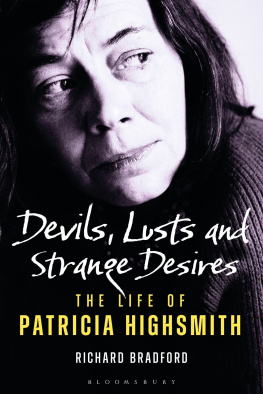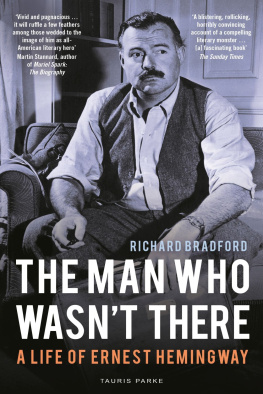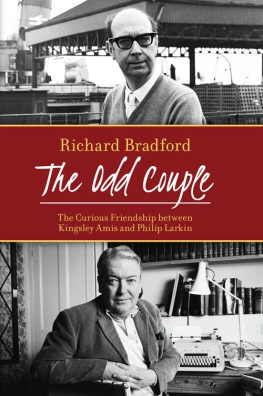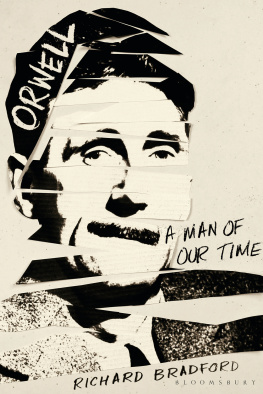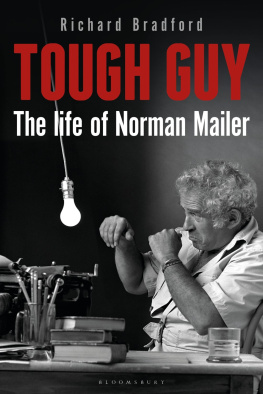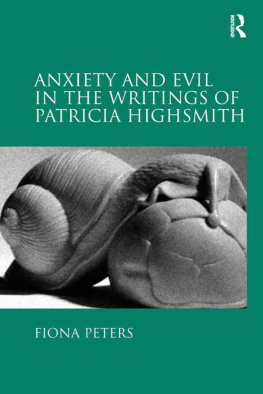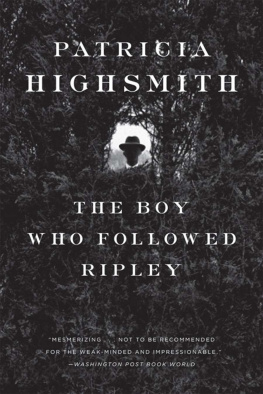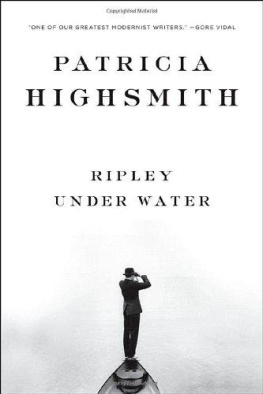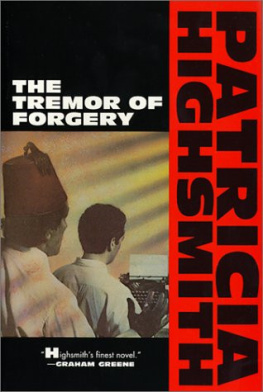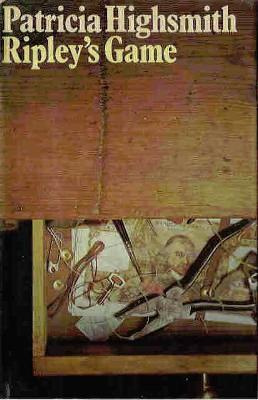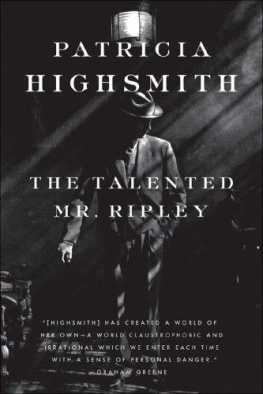Richard Bradford - Devils, Lusts and Strange Desires: The Life of Patricia Highsmith
Here you can read online Richard Bradford - Devils, Lusts and Strange Desires: The Life of Patricia Highsmith full text of the book (entire story) in english for free. Download pdf and epub, get meaning, cover and reviews about this ebook. year: 2021, publisher: Bloomsbury Publishing, genre: Non-fiction. Description of the work, (preface) as well as reviews are available. Best literature library LitArk.com created for fans of good reading and offers a wide selection of genres:
Romance novel
Science fiction
Adventure
Detective
Science
History
Home and family
Prose
Art
Politics
Computer
Non-fiction
Religion
Business
Children
Humor
Choose a favorite category and find really read worthwhile books. Enjoy immersion in the world of imagination, feel the emotions of the characters or learn something new for yourself, make an fascinating discovery.
- Book:Devils, Lusts and Strange Desires: The Life of Patricia Highsmith
- Author:
- Publisher:Bloomsbury Publishing
- Genre:
- Year:2021
- Rating:3 / 5
- Favourites:Add to favourites
- Your mark:
- 60
- 1
- 2
- 3
- 4
- 5
Devils, Lusts and Strange Desires: The Life of Patricia Highsmith: summary, description and annotation
We offer to read an annotation, description, summary or preface (depends on what the author of the book "Devils, Lusts and Strange Desires: The Life of Patricia Highsmith" wrote himself). If you haven't found the necessary information about the book — write in the comments, we will try to find it.
Richard Bradford: author's other books
Who wrote Devils, Lusts and Strange Desires: The Life of Patricia Highsmith? Find out the surname, the name of the author of the book and a list of all author's works by series.
Devils, Lusts and Strange Desires: The Life of Patricia Highsmith — read online for free the complete book (whole text) full work
Below is the text of the book, divided by pages. System saving the place of the last page read, allows you to conveniently read the book "Devils, Lusts and Strange Desires: The Life of Patricia Highsmith" online for free, without having to search again every time where you left off. Put a bookmark, and you can go to the page where you finished reading at any time.
Font size:
Interval:
Bookmark:


To Ames

Contents
Firstly, I wish to express my thanks to Andrew Wilson and Joan Schenkar for their fine achievements in their biographies of Patricia Highsmith, details of which will be found in Suggested Further Reading.
The editorial advice provided by Patrick Taylor and Claire Browne has been invaluable, and thanks are due to Jayne Parsons who set it all in motion. To Dai Howells: diolch yn fawr.
Lisa Verner at Ulster University has, as usual, done a great job.
Dr Amy Burns made it possible.
Leaving aside ones personal opinions on her work, it has to be accepted that Patricia Highsmith was an incomparable individual. Where to begin? She was born Mary Patricia Plangman in Fort Worth, Texas on 19 January 1921. She was an animal lover largely because she regarded them as superior to human beings. On one occasion, she declared that if she came upon a starving infant and a starving kitten, she would not hesitate to feed the latter and leave the child to fend for itself. Why, she once asked, should domestic pets be expected to consume material that we might find unpalatable? She recommended that as a mark of respect to dogs and cats they should be fed carefully prepared foetuses from human miscarriages or abortions. We care nothing for the dignity of bulls and other animals when we eat their testicles, so why shouldnt we compensate mammals similarly with our own bodies? For some time when in France she enjoyed eating beef as it came from the butcher, uncooked. Not tartare, but in a bloody lump. Again, she appeared to think that eating dead cattle unadorned accorded them some respect. She had a particular affection for snails regarding the French, who ate them, as cannibals. In several of her homes she created space in her garden for her private snail colonies and when she moved from England to France she smuggled out a handful of her favourites in her bra. Her obsession with them began, apparently, when she watched two mate with one another. The spectacle appealed to her because the participants seemed devoid of pleasure or emotion. We should not, however, regard her as a forerunner of animal rights or Green activism. Once, she shocked her guests by swinging her pet cat around in a sack apparently to see how animals would cope with being drunk.
On the matter of drink, Highsmith was a record-breaker. From college days she enjoyed everything from beer to spirits and by middle age she worked hard at remaining drunk from breakfast until bedtime. She was most fond of gin, but would counterpoint her intake of this with quarter-pint shots of whisky. When she lived in Suffolk she once attended an event at a hotel, and sat alone in the hall with her drink. She drew the attention of another guest, whod never met her before but who commented to a friend that she was in his opinion insane, dangerous and someone who should be committed. He was a psychiatrist, and was struck by her facial expression, which he claimed never to have encountered outside of a mental institution.
Perhaps a psychiatrist might be able to explain her claim that I am a man and I love women. In basic terms, she wasnt and she did, and her record as a lover might be treated as a triumph for lesbianism, gay sexuality and even womens rights in general. Compared to Highsmith, the likes of Casanova, Errol Flynn and Lord Byron might be considered lethargic even demure. She seemed to enjoy affairs with married women in particular, but breaking up lesbian couples came a close second. Had she lived in our era, one could imagine her taking great delight in adding breaking up lesbian marriages to her repertoire. On six occasions, at least on record, she choreographed mnages trois, ensuring that she was the only member of the threesome who was aware of what was going on, and twice she involved a fourth participant. She found time during her busy career as a nymphomaniac to fall deeply in love, becoming enchanted by five women in particular. More intriguing than what Highsmith said or did with them were the entries on how she felt in her private diaries and cahiers (notebooks) she was a prolific diary keeper, her diaries alone coming to more than 8,000 pages.
The beginning of each relationship is recorded in terms of other-worldly ecstasy, but the hyperbole of infatuation is always accompanied by predictions of murder and death, which usually turned out to be accurate. Not literally, but in terms of the butchery of emotions or the extermination of love. Typically: Beauty, perfection, completion all achieved and seen. Death is the next territory, one step to the left. One of her long-term lovers did attempt suicide and failed, but only just. Highsmith watched as her girlfriend washed down half a bottle of high-strength barbiturates with gin and then left for supper with friends, one of whom Highsmith had had sex with the day before.
One of Highsmiths closest friends commented on her disposition as a whole: She was an equal opportunity offender You name the group, she hated them. Her hate list was impressive in its diversity: Latinos, black people, Koreans, Indians (south Asian), Red Indians, the Portuguese, Catholics, evangelicals and fundamentalists, and Mexicans, among others. In 1992, she visited her erstwhile girlfriend, Marijane Meaker, in America and, glancing around a diner, remarked on how the vast majority of customers were African American. Meaker assumed that she was acknowledging how things had changed since their youth when discrimination was routine, but no. To Highsmith, there were so many of them because of their animal-like breeding habits, that it was common knowledge that black men became physically ill without a regular diet of sex and were too stupid to realise that unprotected intercourse led to pregnancy.
Despite, or perhaps because of, spending ten years as a permanent resident of France, Highsmith cultivated a loathing for all Gallic customs and persons. While she occasionally displayed nostalgic feelings for her native land of America, these were aberrations from her long-standing contempt for the place. She disliked Arabs, mainly for, in her opinion, their poor standards of hygiene, but she made an exception with the Palestinian cause. It was not so much that she sympathised with this small Middle Eastern nation of the dispossessed; rather, her support for Palestine reflected her feelings about another group of people which she abhorred far more than any other: Jews.
She regretted that the Nazis had only succeeded in exterminating less than half of the globes Jews and even coined a term to describe their negligence: Semicaust. Another of her contributions to the linguistics of genocide was Holocaust Inc. In Highsmiths view the Holocaust was by parts an exaggeration in terms of the number slaughtered and an enterprise employed by Jews Israel in particular to exploit the collective conscience of the rest of the world and squeeze money from it. She once confessed to a friend that she enjoyed the rural areas of Switzerland, where she spent her final years, because they seemed like Europe as envisioned by the Nazis after the successful completion of the Final Solution. Jews, if they existed at all, were certainly somewhere else. And yet, three of the women to whom she declared her unbounded love were Jewish. With one woman in particular, Marion Aboudaram, Highsmith took a particular interest in her physiognomy and the hair distribution on the rest of her anatomy, along with the experiences of her mother who had survived the Nazi occupation of Paris.
Font size:
Interval:
Bookmark:
Similar books «Devils, Lusts and Strange Desires: The Life of Patricia Highsmith»
Look at similar books to Devils, Lusts and Strange Desires: The Life of Patricia Highsmith. We have selected literature similar in name and meaning in the hope of providing readers with more options to find new, interesting, not yet read works.
Discussion, reviews of the book Devils, Lusts and Strange Desires: The Life of Patricia Highsmith and just readers' own opinions. Leave your comments, write what you think about the work, its meaning or the main characters. Specify what exactly you liked and what you didn't like, and why you think so.

